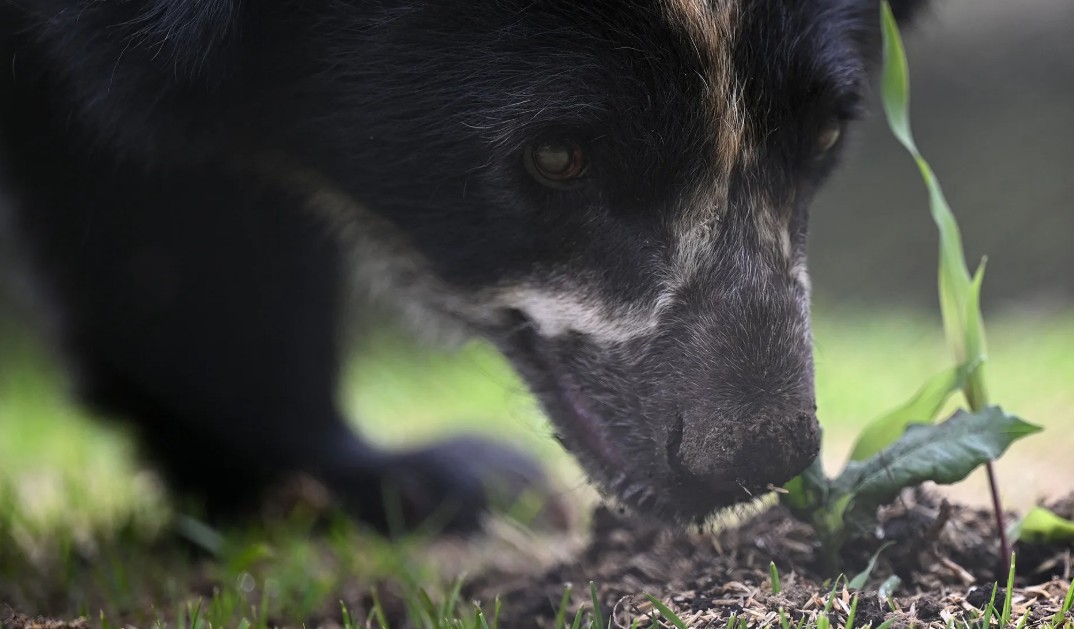Full Story: Popular Science (12/18
Shy ‘Paddington’ bears need more plants to survive

Share
Andean bears (Tremarctos ornatus), perhaps best known for their fictional representation in ”Paddington,” are tropical mammals endemic to the Andes Mountains from Bolivia to Venezuela. They are listed as vulnerable by the IUCN, but some new insight into their feeding behavior could help protect them. Andean bears carefully select the best foraging locations and plants in order to maximize their nutritional intake. They also generally avoid going after livestock, a behvior that has gotten them into some trouble. The findings are described in a study published December 18 in the open-access journal PLOS ONE.
A family of flowering plants called bromeliads are a major part of their diet. These plants native to North and South America include the familiar pineapple, while others are smaller and less colorful like Puya raimondii. Scientists don’t know a great deal about the Andean bears’ foraging behavior and feeding preferences across their habitats. The bears live in a mixture of regions including grasslands and cloud forest.
“Andean bears have a broad diet, including more than 300 plants,” Nicholas Pilfold, a study co-author and conservation scientist with the San Diego Zoo Wildlife Alliance, tells Popular Science. “As such, they play a very important role in seed dispersal across the cloud forest ecosystem.
In the new study, a team from institutions in Peru and the United States conducted surveys of two species of bromeliad (Puya leptostachya and Puya membranacea). These plants are found in high-altitude grasslands, called “puna,” in and around Peru’s Manu National Park. The team recorded the location of each plant and any evidence of consumption by Andean bears, such as dug up or partially eaten stalks.

The trail cameras confirmed that Andean bears were present at the survey locations. However, the surveys revealed that the bears were foraging in only 16.7 percent of available bromeliad patches. The bears were also more likely to forage for bromeliads in the dry season. This is when young and tender plants which are likely easier for them to digest and more nutritious are more readily available.
The bears also preferred to eat P. leptostachya plants that grow on east-facing, steep slopes of puna grassland at the forest’s edge. They were rarely observed foraging for bromeliads outside the national park, where livestock like cattle graze.
[ Related: Two newly discovered Andes Mountain plant species have an appetite for insects. ]
“I was surprised by how selective the bears were when choosing bromeliads to eat, both the plant itself and the habitat in which it was found,” says Pilfold. “Bears only ate the base of the stem of the youngest plants, and did not mind climbing to very high elevation steep slopes to find them.”
According to the team, the findings suggest that Andean bears are actively seeking out bromeliads in places where they feel safe from human disturbance. While the bears generally avoided areas with livestock, they did forage in locations where livestock had been grazed only a few decades ago. Their natural flexibility in foraging behavior may help them quickly regain lost territory, but only with the help of more targeted conservation measures.
“While little is known about Andean bears, our study does show that protecting habitats from human activity can benefit the bears and provide additional areas for feeding,” says Pilfold.




